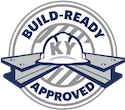Lake Barkley Partnership seeks quality, affordable, reliable broadband connection to worldwide web12/17/2020 Published in the Paducah Sun, December 17, 2020
By Paul Schaumburg Link to original article. EDDYVILLE — Digital technology has transformed the world in recent years, bringing people closer quickly, even halfway around the globe. In many ways the internet and similar factors have made the world more easily accessible. Nevertheless, geography and population continue to factor into the degree to which a region — especially a rural region — shares in that connection. Addressing those needs was the topic Amanda Davenport brought in her report last week to the Lyon County Fiscal Court. The mission of the Lake Barkley Partnership is to invest resources in ways to create a strong, resilient and diverse economic region in Lyon, Caldwell, Crittenden and Livingston counties. Headquartered in Marion in the Crittenden County Economic Development Center, the organization also maintains office space in Lyon and Caldwell counties’ courthouses. Davenport, the partnership’s executive director since 2018, has managed and coordinated economic development there. Her education and experience are centered in rural economic development, county government and small business management. A Murray State graduate, she holds a master of business administration degree from Texas Woman’s University. She’s a certified coordinator through the professional association known as Business Retention and Expansion International. Davenport is on the Board of Directors for the Kentucky Association of Economic Development and is pursuing her economic development certification through the International Economic Development Council. “Rural broadband has been a major issue in our four-county region we cover,” she told the Herald Ledger, after speaking at the fiscal court’s December meeting. “Even before the pandemic, internet service has been a major issue for everybody — for the schools, homes, businesses, residents and attracting new residents.” The very nature of obtaining quality, widely available internet service was the essence of her report. “We started this internet feasibility study and received funding for it through a cooperative network,” she explained. “That network includes some of the fiscal courts, industrial development authorities, county extension agencies that have some agriculture development funds, and the state agricultural development fund in the Governor’s Office of Agriculture Policy.” Altogether, those entities contributed about $24,000 for a study to assess which internet providers are available in the area, types of services they provide, and what the Federal Communications Commission broadband maps say is available here. Those maps determine how federal funding is allocated for internet service development projects. “Basically, the FCC maps are important because any entity that provides internet service must provide the FCC with maps of the service provided to that area,” Davenport said. “All of those are self-reported, without FCC verification. So, in some areas, the providers claim better service than they actually offer. A map says what should be there, as far as the FCC has been told.” That, in turn, dictates how federal dollars are spent to develop internet connection in specific areas. Multiple federal agencies use those maps to direct funding to install, develop or deploy high-speed, rural internet all across the country. “One of the points in the feasibility study compares what the maps actually say, so we can dispute what’s actually happening there,” she noted. The study also includes every known fiber line in the region and internet service speeds in various areas. Having those speed tests helps dispute the claims of the map. For example, if a company claims to offer 25 megabytes and all that actually is available is five megabytes, determined through conducting a number of speed tests, then, those figures don’t match. Essentially, the tests either verify or dispute what the companies say. When a clear and accurate assessment emerges, progress begins. “The big question is, ‘How much would it cost?’ ” Davenport explained. “Next is how to attract a provider to fit that piece of the puzzle. Internet need is one thing, but if there isn’t financial modeling to show the project is feasible with a good, strong payback period within a reasonable amount of time, it’s hard to make the case.” The feasibility study included a cost analysis and payback period with accurate assumptions. “We now have financial modeling to help us understand this project,” she said. Factors include the number of people getting service, installation costs, and fiber vs. wireless modes of providing service. “When we talk about economic development and business attraction, that’s basically what we’re doing,” Davenport concluded. “The business we are trying to attract is an internet service provider and it will take infrastructure, as with any other business project. The question is, ‘What do we need to do to land this project?’ ”
0 Comments
Leave a Reply. |
ABOUTSharing stories, news, and business updates updates from the Lake Barkley Region of Caldwell, Crittenden, Livingston, and Lyon Counties. Archives
August 2022
Categories |

 RSS Feed
RSS Feed

